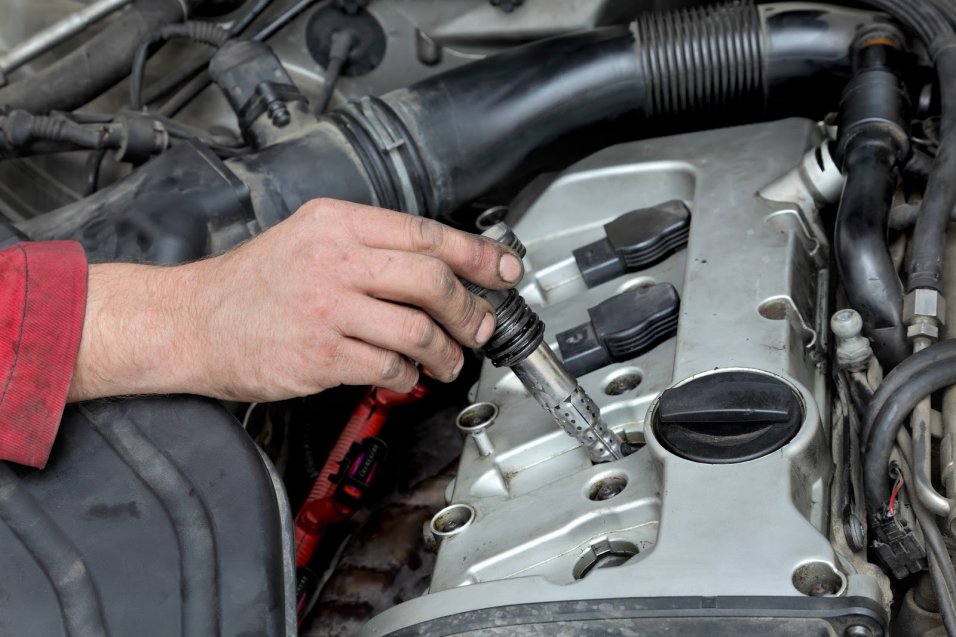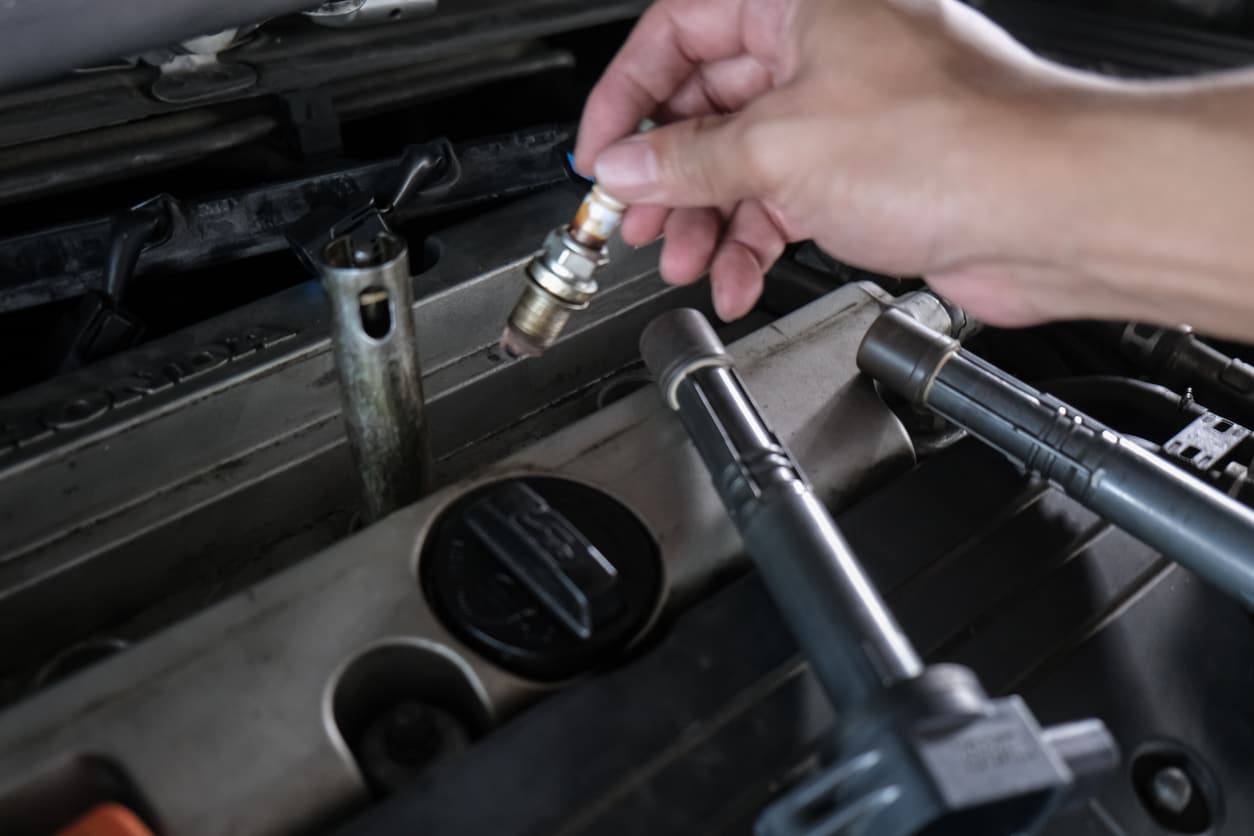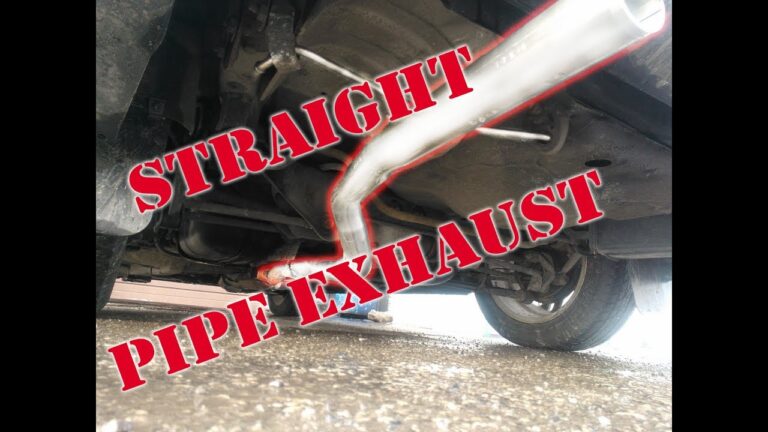Common Ignition System Problems in Older Cars
Common ignition system problems in older cars include issues with the spark plugs and ignition coils that can cause misfiring or difficulty starting the vehicle. These problems are often due to wear and tear over time, leading to reduced performance and overall reliability of the ignition system.
Ignoring these issues can result in poor fuel efficiency and potentially even engine damage, making it crucial to address them promptly. By understanding and resolving these common problems, you can ensure your older car continues to run smoothly and efficiently for years to come.
:max_bytes(150000):strip_icc()/common-ignition-switch-problems-4165834-v2-FINAL-a4c63bac8e79483b83ace80f42b649bd.png)
Credit: www.liveabout.com
Overview Of Ignition Systems
In older cars, ignition systems can be prone to a variety of common problems that can cause starting issues and poor engine performance. It’s important to understand the basics of how the ignition system works and the potential problems that can arise. This overview of ignition systems will help you understand the components and function of this crucial part of your car’s operation.
Components Of An Ignition System
An ignition system consists of several key components that work together to generate and distribute the high-voltage spark necessary to ignite the fuel-air mixture in the engine’s cylinders. These components include:
- Battery
- Ignition coil
- Distributor
- Spark plugs
- Ignition control module
- Ignition switch
Function Of An Ignition System
The ignition system has the important function of providing the spark that ignites the air-fuel mixture in the engine’s cylinders at precisely the right time. It accomplishes this by converting the low voltage from the battery into a high-voltage spark, which is then distributed to the spark plugs. This function is crucial for the proper operation and performance of the engine.
Common Ignition System Problems
On older cars, the ignition system can often encounter various issues that affect the vehicle’s performance. Addressing these problems in a timely manner is key to ensuring your car runs smoothly. Let’s explore some of the most common ignition system problems:
Spark Plug Issues
Spark plugs may wear out over time, causing misfiring or rough idling. It is crucial to regularly check and replace worn-out spark plugs to maintain optimal engine performance.
Ignition Coil Failures
Ignition coils can fail due to heat and age, leading to problems with engine starting or performance. Replacing faulty ignition coils is essential to prevent further damage to the vehicle.
Faulty Distributor
A faulty distributor can result in engine misfires, stalling, or difficulty starting the car. Timely inspection and repair of the distributor can help restore proper engine function.
Faulty Ignition Control Module
Issues with the ignition control module can cause engine stalling, rough idling, or problems with starting the vehicle. Replacing a faulty ignition control module can improve overall engine performance.
Symptoms Of Ignition System Problems
Common symptoms of ignition system problems in older cars include difficulty starting the engine, frequent stalling, poor fuel efficiency, misfiring, and a flashing or illuminated check engine light.
Engine Misfires
Engine misfires are a common sign of ignition system problems, causing jerking or hesitation while driving.
Difficulty Starting The Engine
If your engine is hard to start, it could be due to faulty ignition components like spark plugs or ignition coils.
Stalling Or Rough Idling
Cars with ignition issues often exhibit stalling or rough idling, indicating a need for ignition system inspection.

Credit: www.ymfcarparts.co.uk
Diagnosing Ignition System Problems
In older cars, ignition system problems can arise due to wear and tear over time. Diagnosing these issues is crucial to maintaining the performance of the vehicle. Here are some methods to pinpoint common ignition system problems.
Using A Spark Plug Tester
A spark plug tester is an effective tool to diagnose ignition system problems. By using this tester, you can assess if the spark plugs are receiving the necessary electrical current to ignite the fuel in the engine. If the spark plugs fail the test, they may need to be replaced to enhance ignition system performance.
Checking Ignition Coils
Ignition coils are critical components of the ignition system. To check if the ignition coils are working effectively, you can use a multimeter to measure the resistance and continuity. Any irregular readings may indicate a malfunctioning ignition coil, necessitating a replacement to restore proper ignition system functionality.
Inspecting And Testing The Distributor
The distributor is responsible for distributing the electrical current evenly to the spark plugs. Examining the distributor cap and rotor for signs of wear and carbon tracking can provide insight into potential ignition system problems. Additionally, testing the internal components of the distributor can identify any faulty parts that may be impeding proper ignition.
Testing The Ignition Control Module
The ignition control module manages the ignition system’s timing and firing sequence. Utilizing a diagnostic scan tool can help identify any errors or malfunctions within the ignition control module. Addressing these issues promptly can prevent potential ignition system failures and maintain the overall performance of the vehicle.
Fixing Ignition System Problems
If you drive an older car, it’s important to be mindful of common ignition system problems. Issues like worn-out spark plugs, faulty ignition coils, or a malfunctioning distributor can impact your car’s performance. To ensure smooth driving, regularly inspect and address any potential ignition system issues.
Fixing ignition system problems in older cars can be a daunting task, but with the right knowledge and tools, it is possible to get your vehicle back on the road in no time. When experiencing ignition system problems, there are a few key components that may need to be replaced or repaired. In this article, we will discuss three common ignition system problems and how to fix them: replacing faulty spark plugs and wires, replacing the ignition coils, and repairing or replacing the distributor. Additionally, we will cover the importance of replacing the ignition control module. Let’s dive into each of these areas to better understand the fixes required.Replacing Faulty Spark Plugs And Wires
Faulty spark plugs and wires can lead to ignition system problems in older cars. Over time, spark plugs can wear out, causing misfires, rough idling, and reduced engine performance. Similarly, worn or damaged spark plug wires can cause electrical resistance, resulting in inconsistent spark delivery to the spark plugs. To fix these issues, follow these steps:- Inspect the spark plugs by removing one spark plug wire at a time. Look for signs of wear, such as a worn electrode or a fouled appearance.
- If any spark plugs appear worn or damaged, remove them using a spark plug socket and replace them with new ones.
- Next, inspect the spark plug wires for any cracks, burns, or brittleness. If any of these issues are present, replace the entire set of spark plug wires.
- Ensure that spark plugs are properly gapped according to the manufacturer’s specifications, and reattach the spark plug wires in the correct firing order.
Replacing The Ignition Coils
Ignition coils play a critical role in producing the high-voltage current needed to create a spark in the spark plugs. When ignition coils fail, the engine may misfire, struggle to start, or experience a loss of power. To replace faulty ignition coils:- Locate the ignition coils, usually found on or near the engine’s cylinder head.
- Disconnect the electrical connectors from each ignition coil and remove the mounting bolts securing them.
- Gently pull out the old ignition coils and discard them.
- Install the new ignition coils by firmly inserting them into place and securing them with the mounting bolts.
- Finally, reconnect the electrical connectors to each ignition coil.
Repairing Or Replacing The Distributor
The distributor is another crucial component of the ignition system in older cars. It ensures the correct firing order of spark plugs and distributes high-voltage current from the ignition coil to each spark plug. If the distributor is faulty, it can lead to engine misfires, stalling, or even a complete breakdown. To repair or replace the distributor:- Locate the distributor, usually found on the engine block or cylinder head.
- If feasible, attempt to repair any visible damage such as cracked distributor caps or worn rotor arms. However, in most cases, replacing the entire distributor is the best course of action.
- Remove the old distributor by unbolting it from its mounting position and disconnecting any electrical connectors.
- Install the new distributor, ensuring it is properly aligned and fully seated.
- Secure the new distributor with the mounting bolts and reconnect any electrical connectors.
Replacing The Ignition Control Module
The ignition control module (ICM) plays a crucial role in controlling the ignition timing and firing sequence. A faulty ICM can lead to engine misfires, rough idling, and even a no-start condition. Replacing the ICM involves the following steps:| Step | Action |
|---|---|
| 1 | Locate the ICM, typically found near the ignition coil or within the engine compartment. |
| 2 | Disconnect the electrical connectors from the ICM and remove any mounting bolts securing it in place. |
| 3 | Remove the old ICM and discard it. |
| 4 | Install the new ICM by aligning it with the mounting holes and securing it with the mounting bolts. |
| 5 | Reconnect the electrical connectors to the new ICM. |

Credit: www.firestonecompleteautocare.com
Frequently Asked Questions Of Common Ignition System Problems In Older Cars
What Is The Most Common Ignition Problem?
The most common ignition problem is a faulty spark plug, causing issues with starting the engine.
How Do You Diagnose A Bad Ignition System?
Diagnose a bad ignition system by checking for misfiring, stalling, rough idling, and difficulty starting the vehicle. Use an OBD2 scanner for diagnostic trouble codes and inspect spark plugs and ignition coils for wear or damage.
What Are The Signs Of A Bad Ignition Switch?
Signs of a bad ignition switch include stalling, difficulty starting, and power loss while driving. You may also experience problems with the radio, air conditioning, and other electrical components. Additionally, the engine may keep running even after the key is turned off.
How Do I Know If It’s My Starter Or Ignition Switch?
To figure out if it’s your starter or ignition switch, try a few things. If your car doesn’t start or makes clicking noises, it’s likely the starter. If the engine starts when you try a few times or jiggle the key, it’s probably the ignition switch.
Conclusion
It’s important to address ignition system issues in older cars promptly. Regular maintenance and timely checks can help prevent costly repairs. By staying vigilant and addressing common problems, you can ensure your car continues to operate safely and reliably. Understanding these issues is the key to keeping your vehicle in top condition for years to come.



